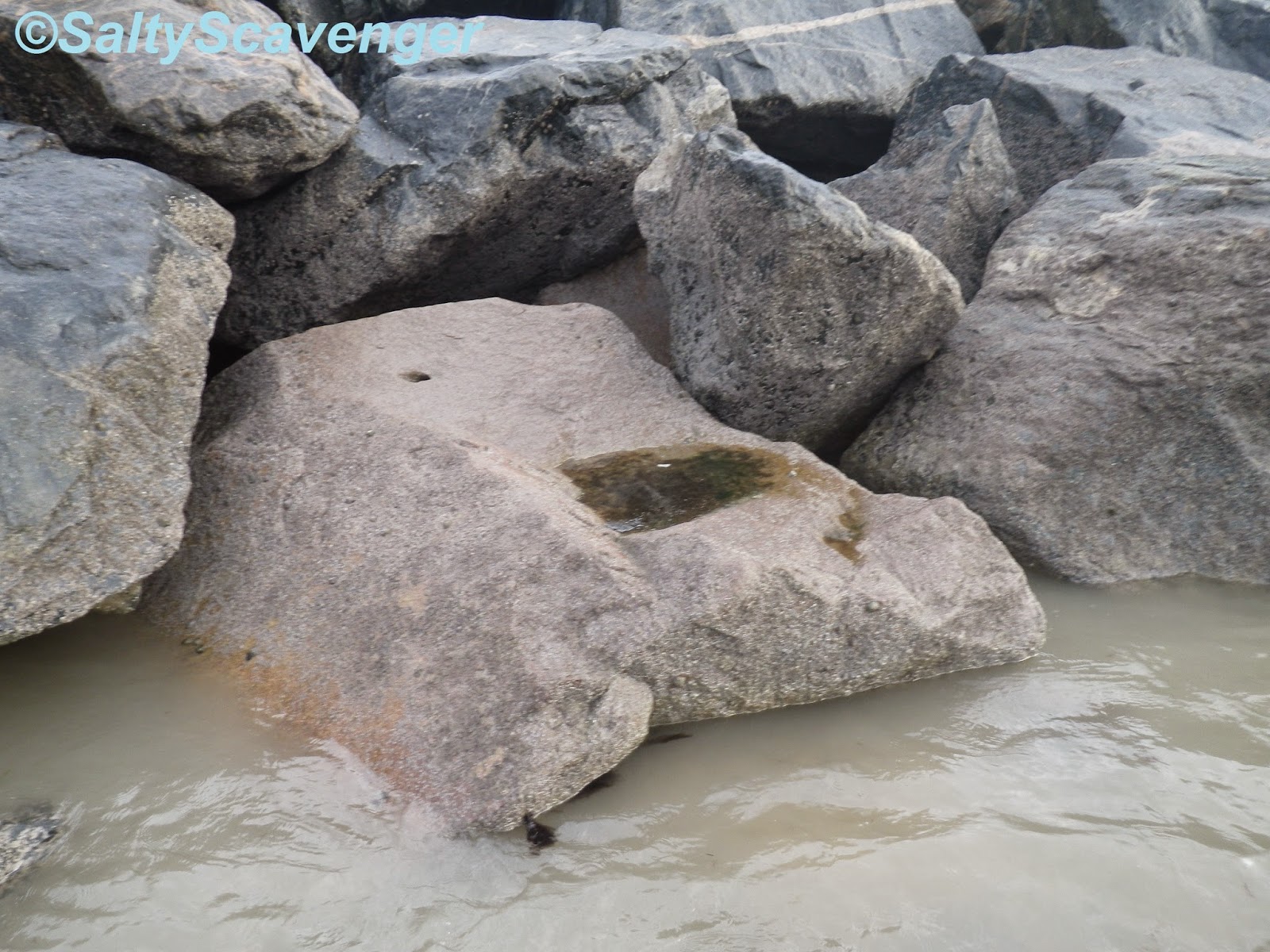The shore at Seapalling is influenced by a series of artificial sea defences that have changed the dynamics of the shore to produce multiple bays comprised of mobile sands with shingle berms in between.
The hard substrate of the breakwater is characterised by a barnacle community with periwinkles, limpets, dog whelks and beadlet anemones. Sheltered areas of the lower breakwater support seaweeds, whilst beneath the sea defenses there are a network of tidal pools.
The hard substrate of the dune defenses, positioned within the sheltered bays, is charecterised by a community of spiral wrack, ephemeral algae and occasional barnacles.
The hard substrate of the dune defenses, positioned within the sheltered bays, is charecterised by a community of spiral wrack, ephemeral algae and occasional barnacles.
Since July, 2014 certain features of the shore have changed, namely algae die back of ephemeral and fucoids.
Habitat classifications:
Substrate
|
LR (Littoral rock)
|
LS (Littoral substrate)
|
||||
Habitat
|
HLR (High energy littoral rock)
|
LMR (Moderate energy littoral rock)
|
FLR (Features of littoral rock)
|
LS.LSa (Littoral sand)
|
||
Biotope complex
|
LR.HLR. MusB (Mussel and/or barnacle communities)
|
BF (Barnacles and fucoids on moderately exposed
shores)
|
FLR.Rkp
(Rockpools)
|
LS.LSa.MoSa.BarSa (Barren littoral coarse sand)
|
||
Biotope
|
LR.MLR.BF.FspiB (Fucus spiralis on
full salinity exposed to moderately exposed upper eulittoral rock)
|
|||||
Below are images of organisms you may see whilst rock pooling in this location:
 |
| The sea defences as Seapalling. Habitat classification: LS.LSa.MoSa.BarSa (Barren littoral coarse sand). EUNIS: A2.22 and LR.HLR.MusB (Mussel and/or barnacle communities) . EUNIS A1.11. |
 |
| Spiral wrack (Fucus spiralis), exhibiting seasonal die back. |
 |
| Barnacles |
 |
| The sediments are similar to those observed in July, 2014 except for decreased razor shells. |
 |
| Barnacles, Periwinkles and Limpets characterise the upper shore sea defences. |
 |
| Juvenile Edible periwinkles (Littorina littoria) seek refuge among the barnacle tests. |
 |
| A limpet and barnacles |
 |
| Barnacles and juvenile Edible periwinkles, Littorina littoera |
 |
| Barnacles and Porphyra sp. |
 |
| Barnacles, Limpets and beneath the overhang, Dog whelks (Nucella lapillus). |
 |
| Ephemeral green algae. |
 |
| A small rockpool within the sea defences. Habitat classification: LR.FLR.Rkp (Rockpools). EUNIS: A1.41. |



No comments:
Post a Comment